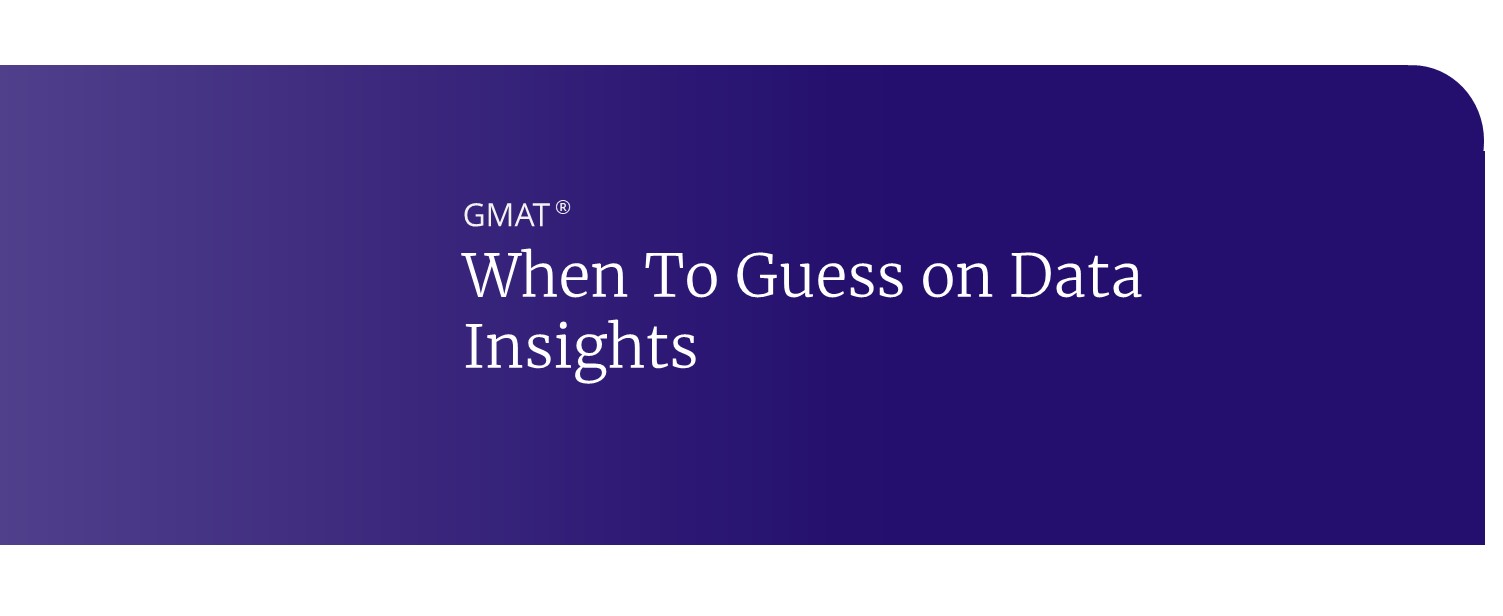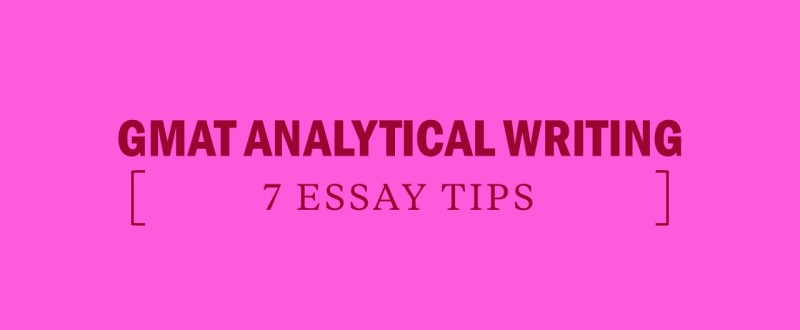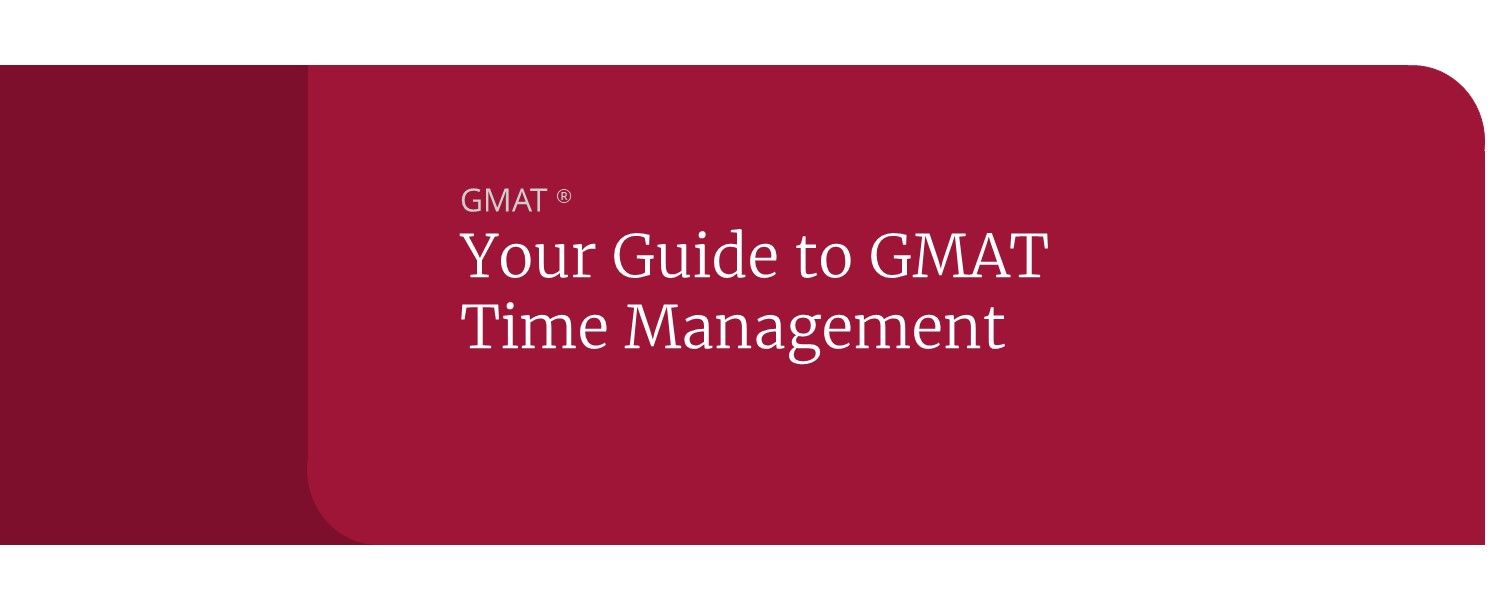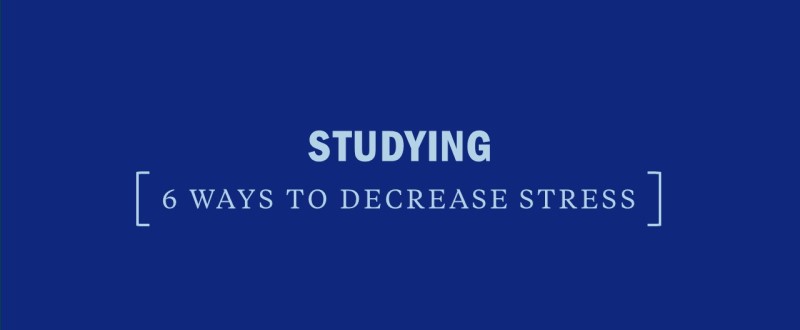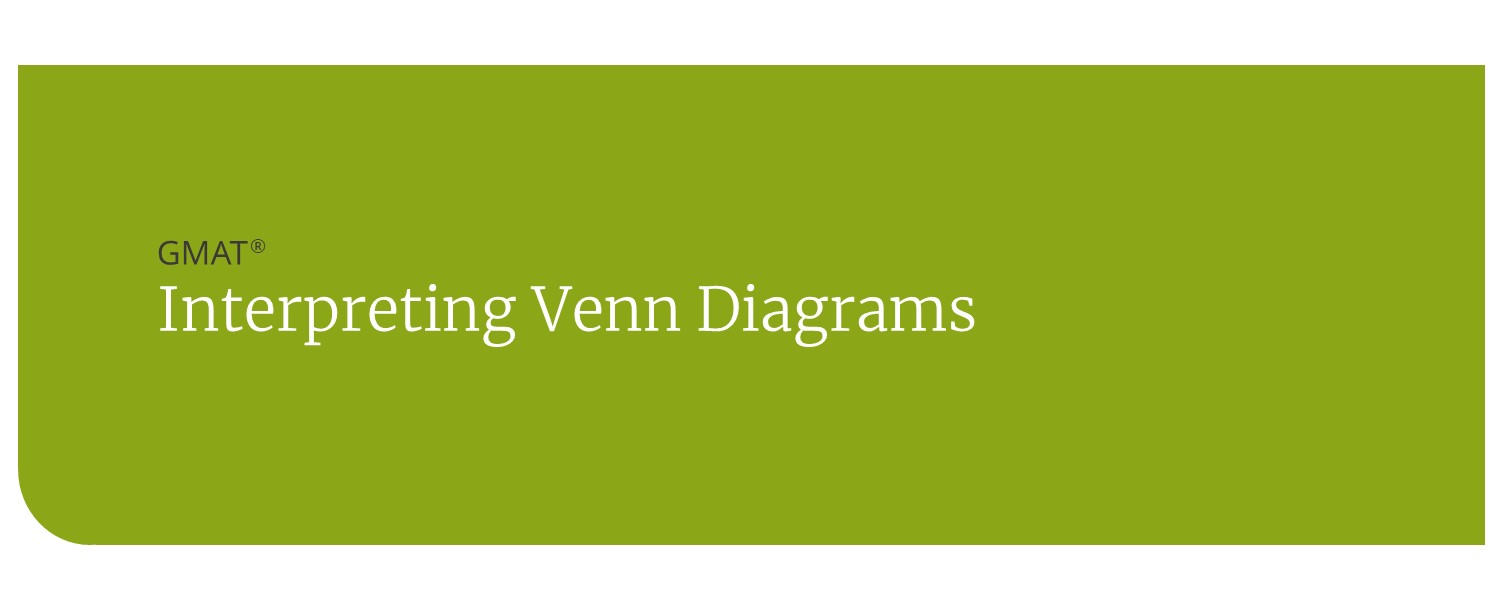When to Guess on Data Insights on the GMAT
The GMAT’s Data Insights section is very challenging for most test-takers. It contains 20 questions, most of which have two or three parts, and you’re only given 45 minutes to complete it. That means that if you spread your time evenly among them, you should spend about 2 minutes per question.
DI is one of many opportunities to advance your candidacy. Even if an MBA program does not place any particular emphasis on Data Insights, strong DI scores can only help your candidacy. A solid score can boost your admissions chances—and can certainly hurt those chances if you blow it off as inconsequential. Let’s look at how to prep for the Data Insights section and when to guess during the test.
Prepping for Data Insights
GMAT DI is identical to the GMAT Quantitative and Verbal sections in that you use a college-level command of grammar, reasoning, vocabulary, and math to negotiate critical thinking problems amidst the constraints of the clock and the online testing scenario. Similarly, DI offers business-oriented, problem-solving scenarios in which you must manipulate spreadsheets and statistical information to deduce inferences that answer the questions asked.
Thus, the primary way to grow in DI is to first refresh yourself on the grammar and math you haven’t seen in years to strengthen your cognitive prowess in the Quantitative and Verbal sections. Once you have rehearsed the pattern-recognition, translation, and work-smarter behaviors demanded by the Quant and Verbal sections to the point that you are raising your scores in those sections, then apply yourself to the different mediums presented by DI.
Here’s one great way to approach your GMAT prep for Data Insights:
- Drill yourself back to a daily familiarity with the math and language concepts demanded by the Quant and Verbal sections.
- Apply that knowledge to the patterned ways that the Quant and Verbal sections require you to use those concepts.
- Practice those applied behaviors until they’re second nature, and your Quant and Verbal scores rise.
- Acquaint yourself with the unique medium and format of the Data Insights section. Get used to the repeated ways in which DI presents information and questions and the patterned methods to efficiently attack the problem-solving it demands.
- When you see your DI practice scores rise, take full-length practice tests so that you encounter DI in its “natural habitat.” That way, you’ll then see the continuity between the logical reasoning and data analysis demanded by DI and all the other sections of the GMAT.
When to Guess and Move On (GAMO)
We have found the solution to fretting about timing on Test Day, and it may surprise you: Guessing blindly is the way to raise your Data Insights score. If you can quickly determine that a two-parts problems will take you more than three minutes to solve, just guess and move on (GAMO).
Of course, you can’t raise your score by guessing blindly on the entire section. Knowing when to guess takes practice.
GAMO Step 1: Know thyself
Because everyone is different, no GMAT instructor can tell you which questions to skip. (And when I say “skip,” that means GAMO.) Your first step is to practice all five DI question types to learn which ones are most troublesome for you.
- Data Sufficiency
- Tables
- Graphs
- Multi-Source Reasoning
- Two-Parts
GAMO Step 2: Assess before you guess
By solving a more straightforward Table Analysis question, I “free up” one of my guesses for the question type that takes me almost as long: Multi-Source Reasoning. This is why practicing and learning your strengths within the section is key to implementing the GAMO strategy.
GAMO Step 3: Count the singletons
I’ve been referring to two-part questions because some Data Insight questions only have one part. Most Data Insight sections on the GMAT have about three of these single-part questions, which I call singletons. You can tell as soon as a question appears on screen whether it has multiple parts or is just a single, multiple-choice question. When you see one of these singletons, take the time to solve it.
Because most DI sections have at least two singletons, make a tick mark on your noteboard to keep count of how many you’ve seen. If you are trying to decide whether to guess on a two-part question number 10, you can factor in the likelihood of having a singleton appear next; if you have only seen one of them, you can pretty safely guess on number 10 and expect a singleton as 11 or 12.
You need to practice GMAT questions to both improve your performance and evaluate which question types are your strongest.
I recently implemented this strategy on both a Manhattan Prep Powered by Kaplan practice test and a GMAC practice test. On both tests, I guessed on three questions, but because I hadn’t wasted any time trying to solve them (and probably still getting them wrong), I had more time to work on the remaining questions. I answered those three GAMO questions incorrectly, but I answered the other nine questions correctly on each test, which helped me get a good GMAT score.

